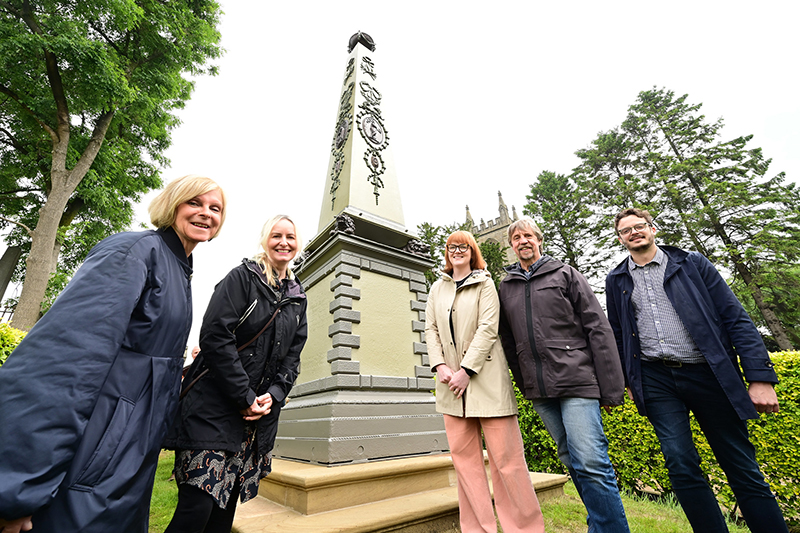
FALKIRK Council has announced that the Bruce Obelisk has been restored and returned to its original place atop the Bruce Family tomb in Larbert Old Parish Church graveyard.
Crafted by the Carron Iron Works, the Obelisk commemorates the life of the explorer, James Bruce of Kinnaird, who died in 1794 and his wife Mary, who died in 1785. After being relocated in 1993, the monument recently showed signs of ageing, making restoration necessary.
The council has led the restoration, with consultants WSP managing the project and Lost Art Limited carrying out the intricate repairs. Work included repairs to the original ironwork and replication of missing parts including decorative embellishments and a protective paintwork finish. The pathway around the tomb has also been renewed.
Funding was awarded to the project by Historic Environment Scotland and Avondale Environmental, part of the NPL Group, through the Scottish Landfill Communities Fund. Other funds came from Falkirk Council itself, through its Bereavement Services and Place-Based Funding streams, while donations were also given by Falkirk Local History Society and Falkirk Preceptory and Priory.
Michael McGuiness, head of growth, planning and climate, said, “The work that has been carried out on restoring this great historical artefact has brought it back to pristine condition and will be there for many decades to come for visitors to admire. This project has not only restored a significant historical monument but also united the community, emphasising the importance of our shared heritage and the world-leading craftsmanship of the Carron Iron Works during the industrial revolution.”
Gail Williamson, grants operations manager at Historic Environment Scotland, added, “It’s wonderful to see the Bruce Obelisk return home to Larbert this week. Work to repair the Obelisk has provided the opportunity for the community to get hands-on with their local history and learn about vital conservation skills. The project has also brought wider awareness of the Carron Ironworks and their place at the heart of the industrial revolution in Scotland.”











